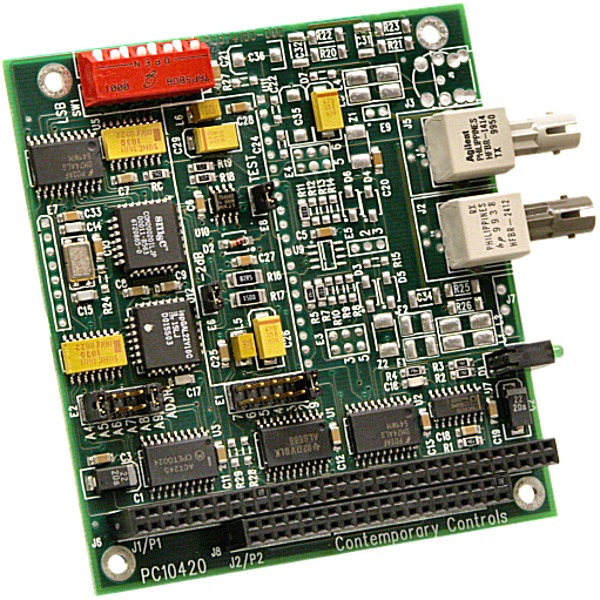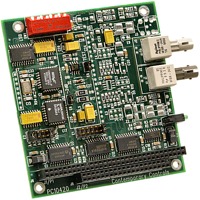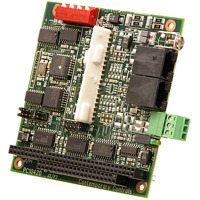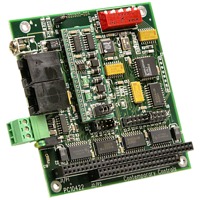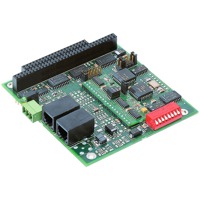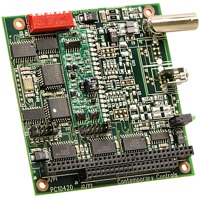ARCnet Interface Modules for PC/104 Bus Computers
The PC10420 Series of Network Interface Modules (NIMs) links PC/104 compatible computers with the ARCNET local area network. It uses the COM20020 ARCNET controller chip and has features such as command chaining and an internal 2K x 8 RAM buffer. Bus contention problems are reduced since the module only needs an I/O address. There is no requirement for wait-state arbitration.
Each NIM has two LEDs to monitor network operation and bus access and an 8-bit DIP switch to set the node address — without the need to remove the module.
Seven transceiver options accommodate dipulse and EIA-485 operation and are explained on the next page.EIA-485 considerations: The AC-coupled EIA-485 transceiver offers certain advantages. Signal polarity is of no concern and bias adjustments are unnecessary since each transceiver has its own fixed bias network isolated by a pulse transformer. But DC-coupled technology offers longer distances and will operate over all six data rates. If the software driver you intend to employ will set the COM20020 into backplane mode, you must use the PC10420-485 version


